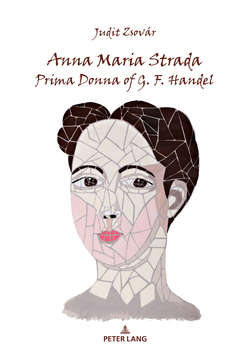Читать книгу Anna Maria Strada, Prima Donna of G. F. Handel - Judit Zsovár - Страница 20
На сайте Литреса книга снята с продажи.
Chapter Two:
First Maturity
Оглавление… begins with Strada’s engagement in Naples (1724–1726), listing her new colleagues: Vico, Tesi, and the young Farinelli. It describes the city as the operatic capital of Europe, giving accounts of its political status, the role and significance of the S. Bartolomeo theatre, the system of the four conservatories, the generations of composers such as Scarlatti, Sarro, Mancini, Porpora, and Leo, the galant style and its musical features, and how is it connected to the new manner of singing. The Del Pò dynasty of painters and stage designers are introduced: Andrea in particular as the impresario of the S. Bartolomeo and future husband of Strada. There are detailed musical analyses on Strada’s parts in Porpora’s Semiramide regina dell’Assiria – with an interlude discussing Farinelli’s possible inspiration for Strada as her stage partner (and Porpora’s singing school represented by him) –, Sarro’s Tito Sempronio Gracco, Leo’s Zenobia in Palmira, and Vinci’s Astianatte, showing Strada’s maturing voice, expanding range, as well as dramatic abilities.
Keywords: Naples, S. Bartolomeo theatre, Farinelli, galant style, vocal range, Aurelio del Pò, Zenobia in Palmira
From the spring of 1724, Strada was engaged at the Teatro San Bartolomeo in Naples following a substantial change in the houseʼs ensemble. The turnover every few years seems to have been a practice of contemporary opera management, especially in Naples, where it became a tradition to hire new singers from the spring season onwards.122 The other important reason for contracting a new cast was the enormous success of Pietro Metastasioʼs Didone abbandonata, set to music by Domenico Sarro and premiered on 1 February that year. According to Kurt Sven Markstrom, someone from the Teatro San Cassiano Venice appears to have witnessed one of the performances and was so impressed that he brought the production to Venice, complete with the poet Metastasio, the cast (including the soprano Marianna Benti-Bulgarelli detta ʻLa Romanina’123 and the contralto castrato Nicolò Grimaldi detto Nicolini),124 along with the intermezzo and its ←53 | 54→performers (such as the comic duo Corrado and Santa Marchesini). There it was premiered the next year with the music of Tomaso Albinoni.125
Thus, they left and were replaced by the young soprano castrato Carlo Broschi detto Farinelli (his first engagement at S. Bartolomeo),126 and the contralto Diana Vico who specialised in trouser roles.127 Later in the autumn, a further contralto, Vittoria Tesi,128 arrived in place of her great rival Antonia Merighi, Stradaʼs former and later colleague (who also left after Didone and became engaged for the next season at S. Giovanni Grisostomo in Venice).129
One may well ask how Strada had been found. Again, personal relations may have stood in the background. Firstly, her protector was Girolamo Colloredo, the governor of Milan from 1719 to 1725. Evidence suggests that he recommended his singer on prior occasions.130 Furthermore, Merighi and the contralto Antonia Laurenti detta La Coralli had worked together with Strada in Venice at SantʼAngelo (1720‒1721). If a singer could at least have had a say in the decision, it is likely that Merighi would have proposed her name in Naples. Further factors might have been Strada’s youth, as well as her reputation from her Venetian collaboration with Vivaldi.
←54 | 55→
